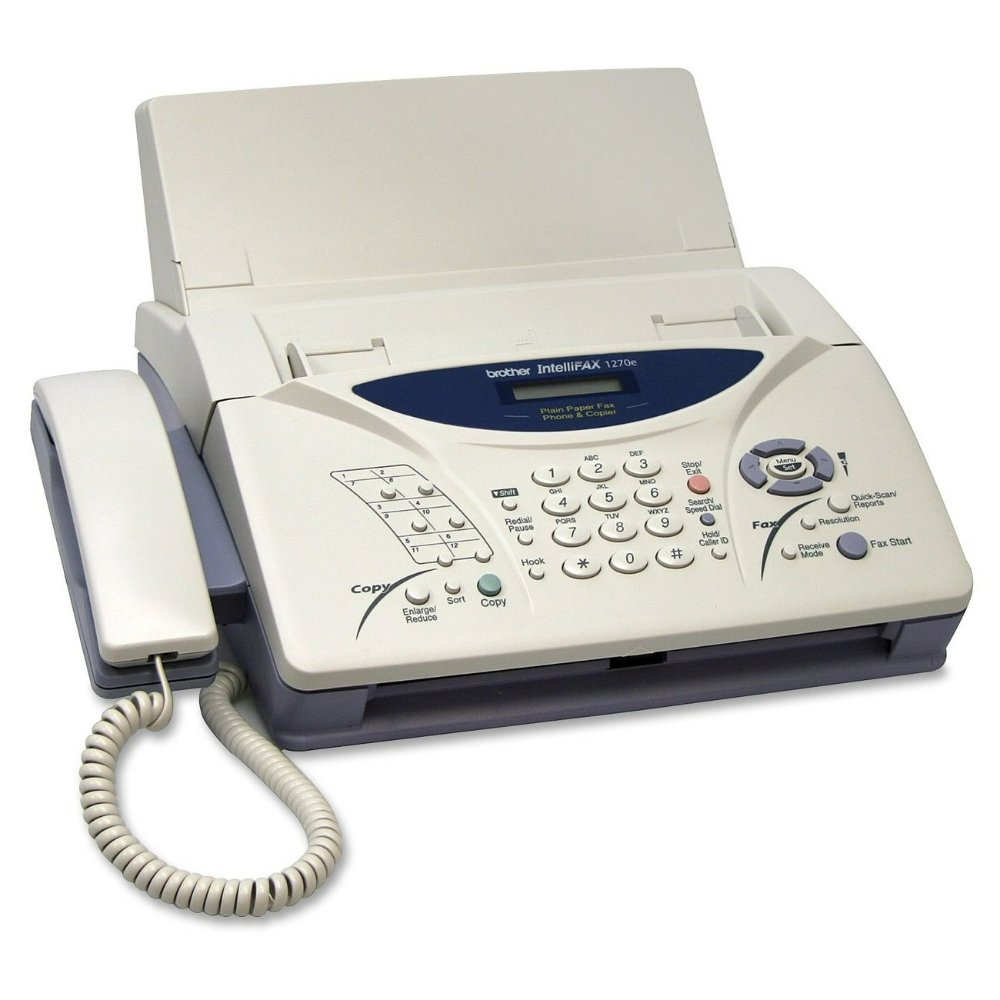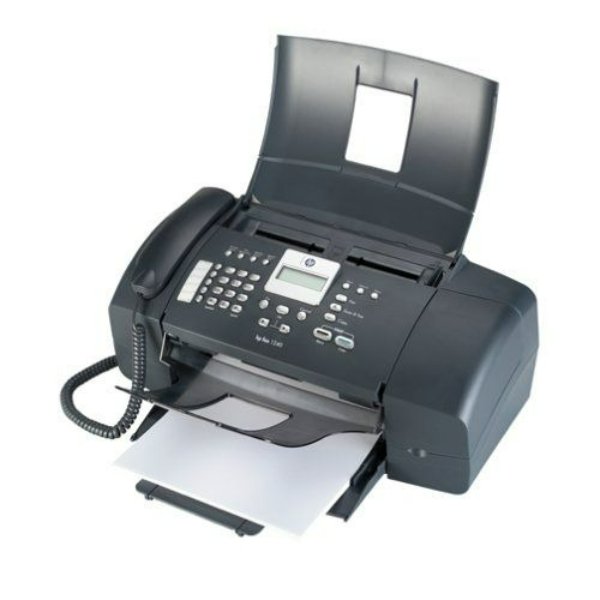The History of Fax Machine Noises
The distinctive sound of fax machines started in the 1960s. Early fax machines, or facsimile machines, communicated through analog telephone lines. They created noises as a part of their operation. These sounds came from the modems inside the machines. Modems converted digital fax data into analog audio signals. When sending or receiving faxes, these audio signals passed through phone lines.
The beeps and buzzes that fax machines made served a purpose. They were handshake signals between sending and receiving modems. These handshake noises confirmed a stable connection. The noises also indicated the type of data compression and the modem speeds. Only after these checks did the actual data transmission begin.
In the past, operators manually connected fax calls. They used these sounds to verify a successful connection. As technology progressed, automatic features replaced manual involvement. Yet the fax machine noise remained. It gave users auditory feedback. They could hear that the machine was working properly.
Modem technology evolved, but fax machine noise stayed largely the same. This is because compatibility across different fax machines mattered. Changing the sounds could risk miscommunication. Manufacturers decided to keep the familiar sounds. This allowed devices from different eras to communicate with each other.
Fax machine is not just a relic of the past, it reveals the history of communication technology. The noisy process marked the transition from analog to digital data transmission. As we discuss further topics, we will uncover why the fax machine still retains its audible identity in the modern era.

The Purpose of Fax Machine Sounds
The sounds made by fax machines serve important purposes. Primarily, they ensure that the communication link between the sending and receiving machines is stable. The beeps and buzzes act as handshake signals. This means that they establish and confirm a connection before beginning the data transfer.
The variety of sounds also informs about the data compression and speed settings. Different tones can indicate different types of data being transmitted. For instance, a higher pitch might signify a faster modem speed.
Users gain assurance by hearing these sounds. When the familiar noises begin, people know the machines are functioning as expected. The auditory feedback minimizes uncertainty for users. They don’t need to check visually to be sure the fax is working properly.
In the context of a busy office, the sound draws attention to the fax machine. It notifies nearby staff that a document is either coming in or going out. Thus, the noise has a practical aspect, acting as a signal to prompt appropriate action.
Lastly, the fax machine noise makes troubleshooting easier. When problems occur, the absence or irregularity of the usual sounds can alert users. This helps in quick identification and resolution of any issues during fax transmission.
How Fax Machines Work
To understand why fax machines make noise, it’s essential to grasp how they function. Fax machines operate by scanning documents into a digital format. They then encode this information into signals that can be transmitted over phone lines.
When a fax is sent, the machine dials the recipient’s number. It waits for a response signal, indicating the receiver is ready. The handshake noises—th eeps and buzzes—take place during this interaction. These sounds confirm the machines are synchronized.
Next, the sending fax machine translates the digital information into tones. The modulation of these tones represents the binary data of the document. The receiving machine listens to these tones and decodes them back into a digital file. It then prints out the received document.
These steps are sequential and take place within minutes, sometimes seconds. The fax machine noise is a byproduct of these data exchange processes. As long as faxes are sent using analog lines, these noises will be present. It’s a mechanical conversation, with sounds ensuring everything runs smoothly.
Throughout these steps, the fax machine noise serves as real-time feedback. Users can hear if the transmission starts and ends properly. If something goes wrong, the disruption in the noise pattern can signal a problem. This allows for quick troubleshooting, often without the need to even look at the device.
Short and simple, fax machines convert documents into sound, transmit these across distances, and then revert them back to documents. The fax machine noise is the audible signature of this remarkable process, even in 2025.

The Role of Auditory Feedback in Fax Transmission
Auditory feedback in fax transmission is crucial. It lets users know that the fax machine is active and functioning. The distinctive sounds—beeps and buzzes—signal the start of a transmission. They indicate the fax machine is sending or receiving a document. Without these sounds, users might be unsure if the machine has started to work.
The noises also help confirm successful connections between fax machines. A steady tone means the machines are communicating. If the tone varies, there may be a connection issue. This helps users quickly identify and solve problems.
The sound serves as an alert, too. It draws attention to the fax machine. This is important in professional settings, where timely responses matter. Staff become aware when a fax arrives or needs to be sent. This prompt can lead to immediate action, which can be critical in business operations.
In troubleshooting, sounds from a fax machine are a first check. If the regular noise changes, or is absent, users notice right away. They can then check the machine and fix any problems without delay. This keeps the flow of work smooth.
Overall, the role of auditory feedback in fax transmission is to provide real-time communication updates. It reassures users, aids in quick problem resolving, and alerts staff to fax activity.
Technological Advancements vs. Traditional Fax Sounds
In the digital age, fax machines have seen major tech improvements. Despite this, they still make traditional noises. While email and instant messaging offer silent communication, fax noises have stuck around. Users might ask why, given today’s tech, these sounds persist.
One reason is backward compatibility. Many offices still use older models. Noises ensure these models work with the latest ones. Without the sounds, the risk of miscommunication rises. Imagine a new fax machine unable to ‘talk’ to an old one. That would disrupt workflow and cause issues.
Another factor is the signal quality confirmation. The beeps and buzzes tell you right away if the signal is clear. If fax machines went silent, users would lose this instant feedback. The fact that a fax noise can signal a problem is a key reason it remains.
Lastly, while tech has advanced, regulations have not always kept pace. Some industries require a noise to confirm that data is sent. This means that fax machines need to keep making sounds.
In conclusion, advances in fax tech have not silenced traditional fax machine noise. Compatibility, clear signals, and regulations play roles in keeping the noises. Users have also grown to rely on these sounds for instant feedback. Silence, it seems, is not golden in the world of fax transmission.

User Preferences and the Sentimentality of Fax Noises
In exploring the reasons behind the enduring presence of fax machine noises, user preferences stand out. Many individuals have developed a sentimental attachment to these iconic sounds. For some, the whirs and beeps recall a bygone era of technology. They evoke feelings of nostalgia for the simpler times of early office environments.
People generally find comfort in the familiar. Fax machine noises have become a staple in various workplaces over decades. The continual use of these sounds meets with approval from a user base that values tradition. It reflects a resistance to change in an otherwise rapidly evolving tech landscape.
Moreover, the distinct noises of a fax machine provide a sense of completion. The end of the transmission is often accompanied by a satisfying series of tones. This auditory cue indicates to users that their task has been successfully accomplished.
In addition, some users prefer the noise because it can also function as an informal alert. In busy settings, these sounds can signify that someone should stand by to receive or properly file the incoming document.
Lastly, in the age of increasing automation, fax machine noise maintains a human touch. Machines that buzz and beep during operation offer a more interactive experience. This can make users feel more engaged in the communication process.
Despite the march towards silent electronics, fax machine noise has maintained its place. User sentimentality, the desire for auditory cues, and a preference for the familiar all anchor the fax machine’s acoustic heritage in the modern office.
Legal and Security Implications of Silent Fax Transmission
The noises fax machines make aren’t just for users’ convenience. They play a role in legal and security protocols. Silent fax transmission may affect how organizations comply with regulations. Many industries have legal standards for confirming data transfers. The auditory signals from a fax machine can serve as proof that a document was sent or received. This can be critical in legal disputes or audits. Without these noises, it might be hard to verify a fax transaction.
In terms of security, fax noises also act as immediate alerts. They notify users when a confidential document is transmitting. This helps prevent sensitive information from going unnoticed. If a fax machine were silent, there could be a higher risk of breaches. Someone may overlook a transmission, leading to unintended access.
Fax transmission sounds are part of compliance procedures in some sectors. Healthcare, for instance, abides by strict privacy laws like HIPAA. These laws often require physical confirmation of data exchanges. Noises from fax machines confirm that patient information is handled correctly. Going silent could complicate these compliance efforts.
Lastly, fax machine noise helps maintain data integrity. It signals the proper functioning of the fax system. If the noise patterns change, users can detect and resolve transmission errors quickly. This ensures that the data remains unaltered during the process. Silent machines would not provide this level of immediate feedback.
In summary, the continued presence of fax machine noise supports legal and security standards. These sounds help with compliance, alert to transmissions, and maintain data integrity. The move to silent transmission could bring challenges in these areas.
The Future of Fax Machines and Their Noises
As we delve into 2025 and beyond, the future of fax machines and their associated noises remains a topic of debate. Innovation and user habits will shape their trajectory. Despite progress in digital communication, fax machines are likely to persist, primarily in sectors where they remain essential for legal and security reasons.
Integrating New Technology: Future fax machines may adopt advanced tech while retaining some noise for user feedback. Imagine machines with noise-cancellation options, yet capable of emitting signals when needed. The balance between old and new will hinge on user preferences and regulatory demands.
Changing User Dynamics: The noise of fax machines might change as younger generations enter the workforce. They may favor a quieter office environment, leading to more subtle feedback sounds. Companies may offer more customization to satisfy diverse preferences.
Security and Compliance: Legally, the need for audible confirmation during faxing is unlikely to disappear. As a result, noises as part of a compliance framework could still be in place. However, tech could be more discreet, using tones that are only audible when necessary.
Environmental Adaptations: We could see design changes to limit noise pollution. Eco-friendly offices may have fax machines with adaptable volume settings. It would reduce noise levels while keeping essential auditory cues.
In conclusion, the fax machine noise, a signature of document transmission, is poised to evolve with technology and user needs. The challenge for manufacturers will be to maintain functionality and user comfort without sacrificing legal and security requirements.